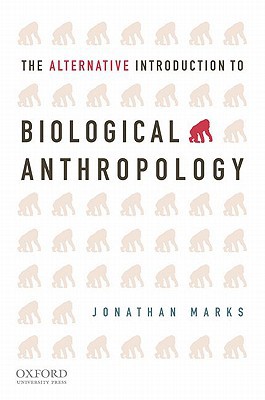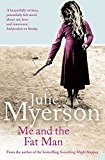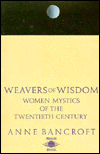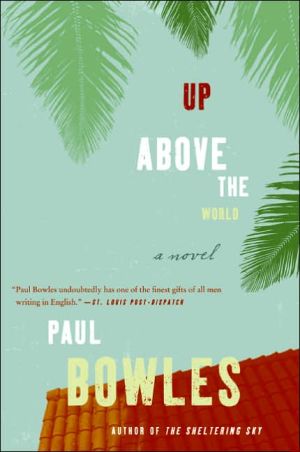The Alternative Introduction to Biological Anthropology
Marks, Jonathan
In The Alternative Introduction To Biological Anthropology, Author Jon Marks Presents An Innovative Framework For Thinking About The Major Issues In The Field With Fourteen Original Essays Designed To Correlate To The Core Chapters In Standard Textbooks. Each Chapter Draws On And Complements -- But Does Not Reconstitute (except For The Sake Of Clarity) -- The Major Data And Ideas Presented In Standard Texts. Marks Explores Such Topics As How We Make Sense Of Data About Our Origins, Where Our Modern Ideas Comes From, Our Inability To Separate Natural Facts From Cultural Facts And Values As We Try To Understand Ourselves, And The Social And Political Aspects Of Science As A Culturally Situated Mental Activity.--publisher's Description. Machine Generated Contents Note: Ch. 1 What Is Anthropology, What Is Biological Anthropology, And Should I Be Getting Science Credit For This? (on The Philosophy Of Science) -- Theme -- What Is Anthropology? -- The Subfields Of Anthropology -- The Anthropology Of Science -- The Normative View Of Science: Scientific Method -- The Social Matrix Of Science -- Relativizing Science -- The Origins Of Anthropology -- The Origins Of Physical Anthropology -- Biological Anthropology Today -- References And Further Reading -- Ch. 2 Where Did Our Scientific Ideas About Ourselves Come From? (on The History Of Science) -- Theme -- The Beginnings Of A New View Of Nature -- The Scientific Revolution -- The Decline Of Degeneration -- The Anatomy Of A Pygmie -- Biblical Fallibility, Or At Least Incompleteness -- Monogenism -- Cause And Effect -- The Great Chain Of Being -- Buffon's Objection To The Nested Hierarchy -- Extinction -- Natural Theology -- Uniformitarian Geology -- Adam's World -- Human Evolution -- References And Further Reading. Ch. 3 Can You Tell If You Are A Darwinist? (on Theories Of Evolution) -- Theme -- Darwin's Argument -- Where People Fit In -- The Sacrifice -- Implications For Pattern -- Implications For Species -- Implications For Biological History -- Implications For Relating Humans To Other Animals -- Phylogeny: The Core Of Darwinism -- Other Darwinisms -- Social Darwinism -- Neo-darwinism -- The Synthetic Theory -- Evolution At The Molecular Level -- Punctuated Equilibria -- Sociobiology -- Universal Darwinism -- Atheistic Darwinism -- References And Further Reading -- Ch. 4 Why Do I Look Like The Cable Guy, Daddy? (on Issues Of Human Heredity) -- Theme -- The Theory Of Particulate Inheritance: Mendel's Laws -- Ten Non-mendelian Laws -- The Chromosome Theory -- Linkage -- Crossing-over -- Polygenic Inheritance -- Environmental Influence On Phenotypes -- Unit Characters -- Properties Of Heterozygotes -- Pleiotropy -- Imprinting -- Extra-nuclear Inheritance -- The Molecular Genomic Basis Of Heredity -- The Alpha-globin Gene Cluster -- Mutation -- Meanings Of The Gene And Genetics -- References And Further Reading. Ch. 5 Are We Here? If So, Why? (on Issues Of Microevolution) -- Theme -- Do Things Exist For A Reason? -- Principal Abstraction: The Gene Pool -- Gene Flow -- Inbreeding -- Natural Selection -- Genetic Drift -- Sickle Cell -- Why Is The Gene Pool The Way It Is? -- Adaptation Or Founder Effect? -- Another Point Illustrated By Sickle Cell And Phenylketonuria -- Sickle Cell, Tay-sachs, And Genetic Screening -- Kinship As A Biocultural Construction -- Genetic History And The Diversity Project -- Who Owns The Body? -- References And Further Reading -- Ch. 6 Building Better Monkeys, Or At Least Different Ones (on Systematics) -- Theme -- Speciation -- Specific Mate Recognition Systems -- Genetic Systems Producing Incompatibility -- Species As Individuals -- Levels And Rates Of Evolution -- Developmental Genetics -- Allometric Growth -- Extinction -- Classification -- Systematics And Phylogeny -- Classical And Cladistic Taxonomy -- Phylogenetics -- Limitations Of The Phylogenetic Method -- References And Further Reading. Ch. 7 Is That An Ape In Your Genes, Or Are You Just Glad To See Me? (on The Place Of Humans In The Natural Order) -- Theme -- Primate Classification -- Problems Of Uniformitarianism -- Genetic And Anatomical Data -- The Mammals -- Our Place In Primate Systematics -- The Living Apes -- The Trichotomy -- Cladism, Reductionism, And The Rise Of The Hominins -- What Does It Mean To Be 98% Genetically Chimpanzee? -- References And Further Reading -- Ch. 8 Apes Run Around Naked, Live In Trees, And Fling Their Poo. Do You? (on The Relevance Of Apes To Understanding Humans) -- Theme -- What Primates Can And Can't Tell Us -- Primate Fieldwork -- Primates In Groups -- Social Behavior And Ecology -- Food -- Sexual Activity And Parenthood -- Models For Human Evolution -- Baboons In The Sixties, Chimps In The Nineties -- Looking Elsewhere For Clues About Human Evolution -- The Ape Mind -- Culture -- Conservation -- References And Further Reading -- Ch. 9 Being And Becoming (on The Relevance Of Humans To Understanding Humans). Theme -- Human Nature -- The Most Fundamental Human Adaptation: Bipedalism -- Why Be Bipedal? -- The Second Fundamental Human Adaptation: The Teeth -- Why Reduce The Canines? -- The Third Fundamental Human Adaptation: The Brain -- Why Be Big Brained? -- Social And Life-history Novelties -- Physiological And Sexual Novelties -- What Does It Take To Make A Scenario Of Human Evolution Valuable? -- Cultural Evolution -- References And Further Reading -- Ch. 10 If History Is Humanities, And Evolution Is Science, What Is Paleoanthropology? (on The Assumptions Of A Diachronic Science) -- Theme -- Scientific Inferences Across Time -- Skeletal Biology -- Sexual Dimorphism -- Ontogeny -- Geographic Variation -- Paleopathology -- Sources Of Morphological Variation -- Lumping And Splitting -- Fossilization -- Other Considerations -- Rights And Responsibilities In Paleoanthropology -- Kinds Of Evidence -- Superposition And Association -- Dating -- Doing The Best We Can With Lost Data -- Making Sense Of Human Ancestry -- Classifying The Living Apes And Fossil Ancestors -- References And Further Reading. Ch. 11 The Dental And The Mental (on Making Sense Of The Early Diversification Of The Human Lineage) -- Theme -- The Shadow Of Piltdown Man -- A Hominid Origin -- Discovery Of The Australopithecines -- Australopithecus: Basal Bipeds -- Paranthropus -- The Dental Adaptation -- Early Homo: The Mental Adaptation -- The Beginning Of Cultural Evolution -- References And Further Reading -- Ch. 12 What To Do When Confronted By A Neandertal (on Continuity And Discontinuity) -- Theme -- The Human Lineage -- The Mental And Social Life Of Homo Erectus -- Homo Sapiens, The Wise Species -- Neandertal Life -- Anatomically Modern People -- The Emergence Of Art -- The Political Nature Of Ancestry -- Testing Paleontological Models Genetically -- References And Further Reading -- Ch. 13 Just How Different Is Different? (on Race) -- Theme -- Race -- Patterns Of Contemporary Human Variation -- Why Do We See Races? -- Race As A Biocultural Category -- Asking Scientific Questions About Human Diversity -- Race Is To Ethnicity As Sex Is To Gender, But Not Quite -- What Is Innate? -- Patterns Of Human Genetic And Behavioral Variation -- References And Further Reading. Ch. 14 Nature/culture, Or How Science Manages To Give Little Answers To Big Questions (on The Non-reductive Core Of Anthropology) -- Theme -- Adaptability And The Human Condition -- Folk Theories Of Heredity -- The State Of The Species -- The Anthropology Of Science -- Bioethics -- Native American Graves Protection And Repatriation Act (nagpra): Who Owns The Bones? -- Origin Myths, Scientific And Otherwise -- Biocultural Studies, Or Cyborg Anthropology -- References And Further Reading. Jonathan Marks. Includes Bibliographical References And Index.
| Name in long format: | The Alternative Introduction to Biological Anthropology |
|---|---|
| ISBN-10: | 0195157036 |
| ISBN-13: | 9780195157031 |
| Book pages: | 304 |
| Book language: | en |
| Edition: | 1 |
| Binding: | Paperback |
| Publisher: | Oxford University Press |
| Dimensions: | Height: 6 Inches, Length: 9.2 Inches, Weight: 0.95680621708 Pounds, Width: 0.7 Inches |



















